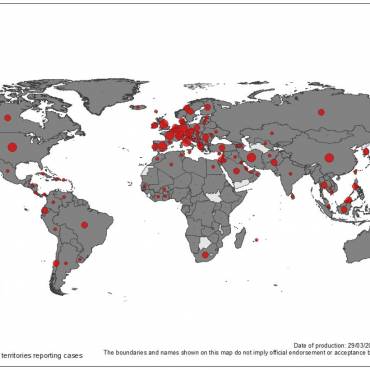Conception is the moment when egg and sperm meet. It can take anything from 45 minutes to 12 hours for a sperm to reach your fallopian tubes, which is where conception usually happens. However, sperm can survive inside your body for up to seven days, so conception can happen at any point in the week after sex, if you’re ovulating.
Learn more about this fascinating journey, and how life begins!
Inside the woman’s body: how an egg is hatched
For women, the possibility of pregnancy begins in the ovaries. These are the two small, oval organs attached to either side of your womb (uterus). The ovaries are packed with eggs, which are made before you are even born. Every baby girl is born with 1 million to 2 million eggs in each of her ovaries.
Many eggs begin dying off almost immediately and the rest steadily decrease in number as you get older. When you start your periods, usually between the ages of about 10 and 14, only about 600,000 eggs are still viable. By the age of 30, scientists calculate that about 72,000 viable eggs remain. You’ll probably release about 400-500 eggs during your fertile years, between your first period and the menopause. In countries such as the UK, the average age of menopause is about 51.
During each menstrual cycle, some time after your period, between three and 30 eggs start to mature in one of your ovaries. The ripest egg is then released, a process known as ovulation. The egg is quickly sucked up by the tulip-shaped opening of the nearest fallopian tube. There are two fallopian tubes, each about 10cm in length, which lead from the ovaries to the womb.
Ovulation is usually about 14 days before your next period starts. The exact time of ovulation depends on the length of your cycle. Several different hormones work together to control the length of your cycle, when your eggs ripen and the timing of ovulation. You can read more about these hormones in our article on the menstrual cycle.
The average egg lives for up to 24 hours after release. It needs to be fertilised by a sperm within this time for a baby to be conceived. If your egg meets up with a healthy sperm on its way to the womb, the process of creating a new life begins. If not, the egg ends its journey at the womb and disintegrates.
If you have not conceived, the ovary stops making oestrogen and progesterone. These are the two hormones that would help maintain a pregnancy. When the levels of these hormones drop, the thickened lining of your uterus is shed during your period. The remains of the unfertilised egg are shed at the same time.
Inside the man’s body: how sperm are made
Women’s bodies mature a single egg each month. Men’s bodies, however, are almost constantly at work, producing millions of microscopic sperm. The sole purpose of each sperm is to swim towards and penetrate an egg.
From start to finish it takes about 10 weeks to create a new sperm cell. The average sperm lives only a few weeks in a man’s body, and at least 39 million are set free with each ejaculation. It means that men have to make sperm on a regular basis throughout their adult lives.
The same hormones that control ovulation in women stimulate the release of testosterone in men. Testosterone is the hormone responsible for producing sperm. Sperm production starts in the testicles, the two glands contained in the scrotal sac beneath the penis. The testicles hang outside the body because they are sensitive to temperature. To produce healthy sperm efficiently they have to stay at a balmy 34 degrees C. This is about four degrees cooler than normal body temperature. Once the sperm is created, it’s stored in each testicle in the epididymis, a six-metre long coiled tube. Just before ejaculation the sperm is scooped up and mixed with semen.
Despite the millions of sperm that are produced and released in each ejaculation, only one can fertilise each egg. The gender of your baby depends on which type of sperm burrows into the egg first. Sperm with a Y chromosome will make a boy baby, and sperm with an X chromosome will make a girl. There are plenty of myths about how to conceive a boy or girl. Some are backed by a bit of scientific evidence, but on the whole, a child’s sex is determined randomly.
What happens while you’re having sex
In addition to all the fun, your bodies are building up tension that you hope will end in orgasm. Having an orgasm also has an important biological function. In men, orgasm propels sperm-rich semen into the vagina and up towards the cervix at roughly 10 miles per hour. The force of ejaculation gives the sperm a good head start on their way to the egg. A woman doesn’t need to orgasm for conception to happen. Gentle uterine contractions can help the sperm along, but these happen even without you having an orgasm.
Many couples wonder if a particular sex position is best for conceiving. No one knows for sure. The most important thing about sex is that you’re both having a good time and you’re doing it often enough.
Not all women ovulate during the middle of their cycle or at the same time in their cycle every month. To improve your chances of conception, aim to have sex every two days or three days throughout your cycle.
While you relax, the sperm’s job is just beginning
At this point you can’t do much except cross your fingers and hope that you conceive. While you and your partner enjoy a relaxing post-sex cuddle, a lot is going on inside your body. Those millions of sperm have begun their quest to find your egg, and it’s not an easy journey. The first obstacle may be your cervical mucus, which can seem like an impenetrable net on your non-fertile days. When you’re most fertile, however, it miraculously loosens up so the strongest swimmers can get through.
The sperm that survive still have a long road ahead. In all they need to travel about 18cm from the cervix through the womb to the fallopian tubes. When you consider that they travel at a rate of roughly 2.5cm every 15 minutes, that’s quite a trip. The fastest swimmers may find the egg in as little as 45 minutes. It can take the slowest up to 12 hours. If the sperm don’t find an egg in the fallopian tubes at the time of intercourse, they can survive inside you for up to seven days. This means that if you ovulate within this time window you could still conceive.
The mortality rate for sperm is very high and only a few dozen ever make it to the egg. The rest get trapped, lost (perhaps heading up the wrong fallopian tube) or die along the way. For the few that get near the egg, the race isn’t over. Each one has to work frantically to penetrate the egg’s outer shell and get inside before the others. The egg needs to be fertilised within 24 hours of its release. When the hardiest sperm of the bunch makes it through, the egg changes instantaneously to prevent any others getting in. It’s like a protective shield that clamps down over the egg at the exact moment the first sperm is safely inside.
Now a new life is born …
During fertilisation, the genetic material in the sperm and egg combine to create a new cell that will rapidly start dividing. This bundle of new cells is known as the blastocyst. It continues travelling down the fallopian tube towards the womb, a journey that can take another three days or so.
You are not actually pregnant until the blastocyst embryo has attached itself to the wall of your womb (uterus), where it will develop into a fetus and placenta. Occasionally, the blastocyst will implant somewhere other than the womb (usually in the fallopian tube). This is called an ectopic pregnancy, which is an abnormal pregnancy and may end up in a medical emergency. The pregnancy will not survive outside the uterus and needs to be completely treated or removed.
It will be a couple of weeks until you miss a period and suspect that you’re going to have a baby. Once you have missed your period or noticed one of the other signs of pregnancy, a home pregnancy test will confirm it. If you’ve got a little one on the way, congratulations, and welcome to the start of another incredible journey.
Original article: https://www.babycentre.co.uk/a545272/how-you-conceive





Add Comment